Project Row Houses: Recovering and Teaching Houston's History
Chelsea Shannon
Jan 10, 2014
In 2004, art historian Hal Foster coined the phrase "archival impulse" to describe artistic practices that create idiosyncratic archives of particular moments, people, or places in modern history1. For Foster, this trend marks a shift from the predominant view of the 80s and 90s of the past as a place of trauma - artwork concerned with archives use the past in a much more positive, generative way. 2A similar impulse is at work in Houston: DiverseWorks' 11th Hour and Project Row Houses' Round 39: Looking Back, Moving Forward both used institutional archives as ways to recover and teach Houston's history while also generating new work.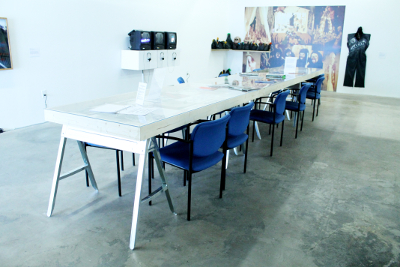 Conference Table in DiverseWorks's Main Gallery
DiverseWorks framed 11th Hour as both a lesson on Houston's history of activist art and as a site for new production. The show featured politically urgent works and exhibitions that had been shown at the alternative space since its opening in 1982, many of which have become canonical in the history of contemporary art and performance including works by William Pope L., Annie Sprinkle, and Karen Finley. The exhibition sought to use this artistic archive to spark action in the present. A large glass-topped conference table filled with paper ephemera from past DiverseWorks events was placed in the main gallery space. The gallery used the table to host its weekly DWOW (DiverseWorks on Wednesday) events, panels, and readings but also opened the space to the community with the hopes that the table would facilitate public meetings and activism. "Here," DiverseWorks proclaimed in its promotional materials, "activism is put into motion in the past, present, and future."
Project Row Houses' current round similarly centers around its institutional archive: PRH's Public Art Director Ryan Dennis asked this round's artists to use the Project Row Houses archive as the source for their contributions. The results take a range of forms though they often constitute archives themselves and demonstrate that archives are not static but sites of new possibilities.
Jessica Vaughn's sound installation Right-of-way-Acquisition collected the sounds of the highways cutting through the Third Ward, infrastructure for the greater city that has also stifled economic development and social mobility in the neighborhood it crosses. A megaphone plays the recorded sounds for the visitor while also allowing the visitor's sounds to be added into the piece through microphones placed throughout the room. Vaughn describes this as "call and response" where the archive continually expands from the depersonalized sounds of the highway to include more and more traces of individual human connection.
Valeria Piraino's untitled contribution similarly injects the here and now into her archival work. Her installation uses photographic slides from the Project Row archives, printing their views of the Houses in light tones onto large panels of white fabric. The effect is a ghostly afterimage, memories partially safeguarded by the Houses' archives, but also highlighting the impossibility of fully knowing the past through the present. The printing process took place on the old wood floor of Piraino's Row House and the wood grain is visible in the panels, another signal of the present and the past working simultaneously..
Conference Table in DiverseWorks's Main Gallery
DiverseWorks framed 11th Hour as both a lesson on Houston's history of activist art and as a site for new production. The show featured politically urgent works and exhibitions that had been shown at the alternative space since its opening in 1982, many of which have become canonical in the history of contemporary art and performance including works by William Pope L., Annie Sprinkle, and Karen Finley. The exhibition sought to use this artistic archive to spark action in the present. A large glass-topped conference table filled with paper ephemera from past DiverseWorks events was placed in the main gallery space. The gallery used the table to host its weekly DWOW (DiverseWorks on Wednesday) events, panels, and readings but also opened the space to the community with the hopes that the table would facilitate public meetings and activism. "Here," DiverseWorks proclaimed in its promotional materials, "activism is put into motion in the past, present, and future."
Project Row Houses' current round similarly centers around its institutional archive: PRH's Public Art Director Ryan Dennis asked this round's artists to use the Project Row Houses archive as the source for their contributions. The results take a range of forms though they often constitute archives themselves and demonstrate that archives are not static but sites of new possibilities.
Jessica Vaughn's sound installation Right-of-way-Acquisition collected the sounds of the highways cutting through the Third Ward, infrastructure for the greater city that has also stifled economic development and social mobility in the neighborhood it crosses. A megaphone plays the recorded sounds for the visitor while also allowing the visitor's sounds to be added into the piece through microphones placed throughout the room. Vaughn describes this as "call and response" where the archive continually expands from the depersonalized sounds of the highway to include more and more traces of individual human connection.
Valeria Piraino's untitled contribution similarly injects the here and now into her archival work. Her installation uses photographic slides from the Project Row archives, printing their views of the Houses in light tones onto large panels of white fabric. The effect is a ghostly afterimage, memories partially safeguarded by the Houses' archives, but also highlighting the impossibility of fully knowing the past through the present. The printing process took place on the old wood floor of Piraino's Row House and the wood grain is visible in the panels, another signal of the present and the past working simultaneously..
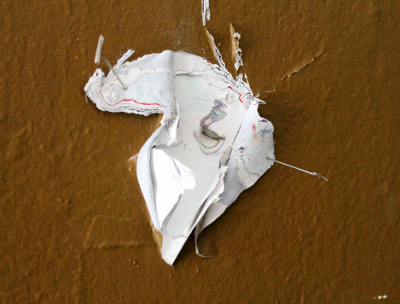 Material-lies's Excavation Process Material-lies's Excavation Process |
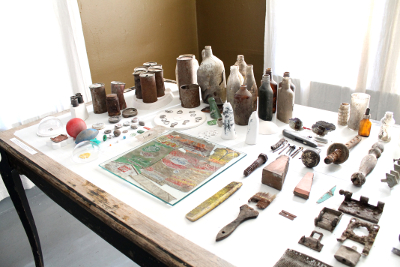
Display table In Lovie Olivia's Material-lies Jamal Cyrus and Ray Carrington III take on a similar act of history formation in their collaboration Unity Photobank, an ambitious project aiming to visually archive Houston's Third Ward. Jamal Cyrus states in the project's flyer: "I want all of the photographs ever taken within the Third Ward, from the mid 1930s to the present day."Unity Photobank styles itself like a storefront with informational signs painted in the windows: the Photobank will provide digital scanning services and will fill its interior with the images collected of the neighborhood. As of the time of this writing the interior is relatively bare, a visual reminder of history's gaps and the power of archival projects to fill them. In their artist talk at the Round 39 opening, Cyrus and Carrington spoke of the archive as a source of empowerment: documenting what was and what is as a way for the neighborhood to craft its own history rather than allowing it to be dictated by outsiders.
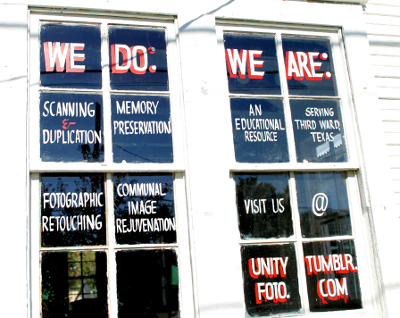
Exterior
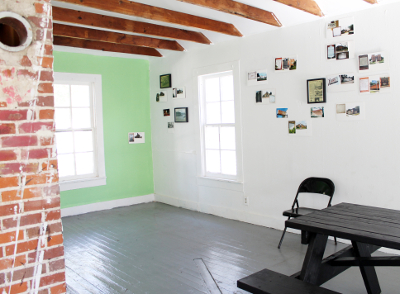
Interior

Comments (0)
Add a Comment